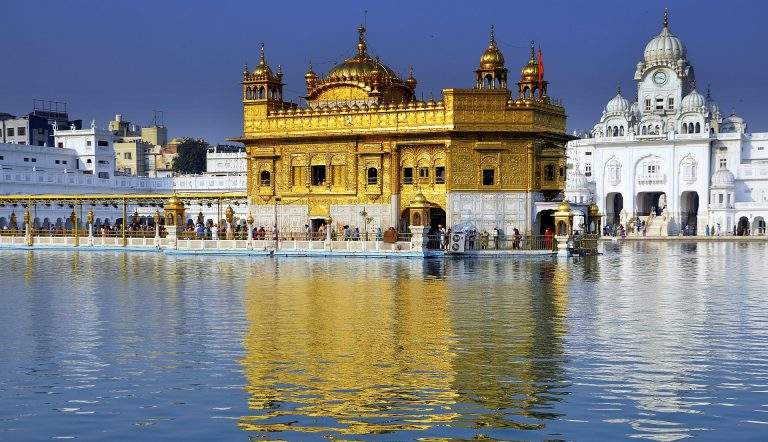Kedarnath Trek: Sacred Path in the Himalayas
Kedarnath Trek Introduction:
The Kedarnath Trek is a journey that draws explorers, nature lovers, and worshippers alike. It is set among the breathtaking peaks of the Garhwal Himalayas. One of the twelve Jyotirlingas and an important spiritual place dedicated to Lord Shiva, the famed Kedarnath Temple is the destination of this holy trip. Beyond its religious significance, the walk offers a mesmerizing combination of unspoiled nature, spectacular scenery, and tranquility that strikes the spirit. Come along with us as we set off on a memorable journey that will take us through the Himalayan Sacred Path.

Kedarnath Trek Distance
Kedarnath trek is the most beautiful trek in the world. The distance of Kedarnath trek is 18 kilometers on foot and starts from Gaurikund and goes to Kedarnath.
Kedarnath Registration:
For online Kedarnath registration for Kedarnath Dham Yatra, you can register by visiting the official government.
registrationandtouristcare.uk.gov.in
The Journey Begins: Rishikesh to Gaurikund
The journey to Kedarnath begins at the holy town of Rishikesh, a prominent spiritual destination in Uttarakhand. From here, trekkers make their way to Gaurikund, the starting point of the Kedarnath trek. The route to Gaurikund is dotted with picturesque views of the Ganges and the confluence of the rivers Alaknanda and Mandakini. Upon reaching Gaurikund, the air is filled with a palpable sense of anticipation and devotion as trekkers prepare to embark on their sacred expedition.
The Trek Commences: Gaurikund to Kedarnath
The 16-kilometer journey from Gaurikund to Kedarnath passes through a variety of landscapes and breathtaking scenery. Trekkers have the opportunity to see the unspoiled grandeur of the Himalayan wilderness as the path meanders past thick woods, gushing rivers, and lovely villages.
The snow-capped peaks become more visible as you climb higher, and the energizing mountain air keeps you encouraged as you go. Rambara is an important landmark along the path where hikers can stop for a break and take in the natural beauty before carrying on.
Reaching the Abode of Lord Shiva: Kedarnath Temple
You reach your ultimate destination, the famed Kedarnath Temple, after a strenuous but rewarding hike. A masterpiece of stone construction and spirituality, the temple is located at a height of around 3,583 meters (11,755 ft). Awe-inspiring scenery is produced by its intimidating presence against the background of high peaks.
According to legend, the temple was built by the Pandavas in the past and afterward restored by Adi Shankaracharya. A majestic lingam, thought to be Lord Shiva’s hump, is housed in the sanctum sanctorum, which is only occasionally accessible to worshippers during the day.
Spiritual Experience: The Essence of Kedarnath Trek
At Kedarnath, you will have a unique spiritual experience. The moment you step foot inside a temple, the air is infused with devotion, prayers, and the jingling of temple bells. Everyone who visits is moved by the uplifting aura of divinity created by the chants’ beat and the incense’s aroma.
In addition to the temple, Kedarnath’s environs have places where you can meditate. Here, you can engage in introspection and connect with your inner self while surrounded by the tranquil Himalayas.
Beyond Spirituality: Nature’s Bounty
Even though the Kedarnath Trek’s spiritual component is unquestionably alluring, nature lovers will find the experience to be just as enjoyable. A diversity of plants and fauna can be seen throughout the several regions you pass through on the walk. Look out for the elusive Himalayan fauna, which includes the Himalayan Monal, musk deer, and the infrequent sightings of a Himalayan black bear.
Along the way, hikers can take in breathtaking panoramas of the area’s mountains, including the spectacular Kedar Dome and the commanding Chaukhamba Range.
Kedarnath Trek Weather and Best Time to Visit
Planning the trek carefully is crucial because the Himalayan weather can be erratic. The summer months of May to June and the fall months of September to October are the ideal times to complete the Kedarnath Trek. The weather is generally temperate and stable throughout these times, providing beautiful skies and comfortable temperatures for a relaxing trip.
Kedarnath Yatra by Helicopter: Price and More Information
Helicopter Services and Availability:
Helicopter services for the Kedarnath Yatra are available from various locations, including Phata, Guptkashi, Sirsi, and Sersi. These locations serve as helipads from where the helicopters transport pilgrims to the Kedarnath Temple. The helicopter ride provides stunning aerial views of the Himalayan landscape, making the journey an unforgettable experience in itself.
Price of Kedarnath Yatra by Helicopter:
Depending on the point of departure, the season, and the demand for helicopter services, the price of the Kedarnath Yatra by helicopter can change. The approximate cost of a round-trip helicopter journey from Phata to Kedarnath ranged between INR 3,000 and INR 4,000 per person as of my most recent update in September 2021.
Helicopter Booking and Timings:
The helicopter flight in Kedarnath Dham is from 6.30 am to 11.10 am.For booking you can visit their official site heliyatra.irctc.co.in
-
Is a guide necessary for Kedarkantha trek?
Yes Guide is necessary for Kedarkantha trek.
they will not allow trekkers without the guide. If you are starting from the sankri village you will find so many guides, they will take care of forest department permissions.
And yes you should not try this trek without guide because of plenty of reasons, there is no dedicated rescue team and situation can go wrong at any time so be careful and hire guide. -
What is the main preparation we can take before going to the Kedarkantha trek in the winter?
If you are planning to go on the Kedarkantha trek in winter, it is important to take certain preparations to ensure your safety and enjoyment during the trek. Here are some key preparations you can take before embarking on the Kedarkantha trek in winter:
1.Physical Fitness: Start preparing your body well in advance by engaging in regular physical exercise and cardiovascular activities. Strengthen your legs, core, and upper body through exercises like hiking, jogging, cycling, and strength training. Building endurance will help you cope with the demanding terrain and cold weather conditions.
2.Acclimatization: Give yourself sufficient time to acclimatize to high-altitude conditions before starting the trek. It is recommended to spend a couple of days in a nearby town or village at a moderate altitude to allow your body to adjust to the reduced oxygen levels.
3.Research and Planning: Gather comprehensive information about the trek, including the trail route, weather conditions, and necessary permits. Familiarize yourself with the challenges and requirements of the trek to make informed decisions. It is advisable to go with an experienced guide or join a reputable trekking agency.
4.Packing Essentials: Pack appropriate clothing and gear suitable for winter trekking. Essential items include a sturdy and insulated pair of trekking boots, thermal innerwear, warm layers (such as fleece jackets and down jackets), waterproof and windproof outer layers, gloves, woolen socks, a warm hat, sunglasses, and a good-quality sleeping bag rated for sub-zero temperatures. Don’t forget to carry a headlamp, trekking poles, a backpack, a water bottle, and a first aid kit.
5.Proper Layering: Layering your clothing is crucial in winter trekking. It allows you to adjust your body temperature by adding or removing layers as needed. Opt for moisture-wicking and quick-drying materials to keep yourself dry and warm. Avoid cotton as it retains moisture and can make you feel colder.
6.Cold-Weather Protection: Protect yourself from the cold by wearing a good-quality insulated jacket, gloves, and a hat. Use a neck gaiter or a scarf to cover your face and neck, and wear warm socks and waterproof boots to keep your feet dry and insulated.
7.Hydration and Nutrition: Stay hydrated by carrying a sufficient amount of water and drink regularly during the trek. Pack high-energy snacks like nuts, chocolates, and energy bars to maintain your energy levels. Carry a small stove and lightweight cooking utensils if you plan to cook your meals along the trail.
8.Safety Measures: Ensure you have a comprehensive first aid kit, including essential medications, bandages, and altitude sickness medications. Familiarize yourself with the symptoms of altitude sickness and know how to respond to them. It is crucial to have travel insurance that covers high-altitude trekking and emergency evacuations.
9.Weather Check: Stay updated with the weather forecast and be prepared for sudden changes in weather conditions. Winter trekking can be unpredictable, so it is essential to have contingency plans and be ready for delays or alterations in the itinerary.
10.Leave No Trace: Practice responsible trekking by minimizing your impact on the environment. Pack out all your trash, avoid littering, and follow the principles of Leave No Trace. Respect the local culture and wildlife, and maintain the sanctity of the trekking trail.






